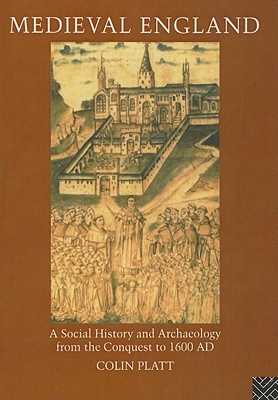

 |

|

The average rating for Medieval England A Social History and Archaeology from the Conquest to 1600 A.D. based on 2 reviews is 3.5 stars.
Review # 1 was written on 2019-01-17 00:00:00 Don Alvis Don AlvisA serious work on medieval England. While it's well done it's a bit heavy reading and frequent references to archeological and historical sites that I assume are familiar to serious students with an academic background in the subject make it a bit of a struggle for the casual reader. Having said that, it's a worthwhile read for developing a sense of how English society developed during this period and particularly the impact of the Black Death on society and the economy. |
Review # 2 was written on 2012-12-22 00:00:00 Nikolas Mikalishen Nikolas MikalishenOriginally published on my blog here in September 2001. It is still usual for different types of historical study to be kept separate. This book, however, combines social history with archaeology most successfully. In most social histories, it is pretty much only documentary sources of various types which are used for those periods in which they exist in sufficient completeness. For most of the period covered in Medieval England, these sources are incomplete, fragmentary and usually have a clerical bias, though that doesn't stop historians using them. Platt, however, backs up much of what he has to say by reference to archaeology, particularly to the study of buildings. This means that the examples illustrating the social history are not the usual ones; instead of passages from the Paston letters, say, Platt uses the ways in which churches were rebuilt in the fifteenth century, or the changes in village settlement patterns. This may be in many cases a rather superficial change, but it gives Medieval England an entirely different feel and gives a good excuse for the profuse illustrations, both photographs and diagrams. The other effect that the concentration on the archaeological record allows Platt to do is to correct some of the erroneous impressions which tend to be left by history which is more popular in style. The best example of this is a discussion of the fourteenth century crisis, which is usually connected to the effects of the Black Death. Platt traces the fall to processes well under way half a century before the plague, which came as a final blow to an already over-stretched system. The evidence for this is partly documentary - accounts of trailbastons as a response to armed gangs roaming the countryside at the beginning of the century - and partly from the archaeology - such things as dates of abandonment of deserted villages. This is also the reason that the book continues for so long after the conventional date for the end of the medieval period in England - the accession of the Tudors in 1485 - and even after the Reformation and dissolution of the monasteries which perhaps more than any other events could be said to mark the end of an era. There was still continuity in many areas, which can be more clearly seen from archaeology - buildings marrying fifteenth century styles with fashionable continental architectural ideas, for example. By the end of the book, though, it is very clear that the English society being described is in many ways very different from that a hundred and fifty years earlier. |
CAN'T FIND WHAT YOU'RE LOOKING FOR? CLICK HERE!!!